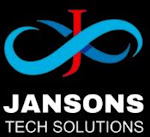Introduction
An significant development for the Indian space program was the successful launch of Chandrayaan-3, the third lunar mission of the nation. After the successes of Chandrayaan-1 and Chandrayaan-2, this highly anticipated launch represents another important milestone for the Indian Space Research Organization (ISRO). We give real-time updates on the Chandrayaan-3 launch in this article, including information on the spacecraft's successful separation from the Launch Vehicle Module (LVM) and its injection into an internal orbit.Chandrayaan-3 Launch Overview
Pre-Launch Preparations
Liftoff and Ascent
Separation from LVM
Injection into Internal Orbit
Future Objectives
Conclusion
Chandrayaan-3 Launch Overview
Chandrayaan-3 is India's third lunar mission, following the successful Chandrayaan-1 and the ambitious Chandrayaan-2 missions. It aims to further expand our understanding of the Moon's surface and its geological characteristics. Chandrayaan-3 is equipped with advanced scientific instruments and cutting-edge technology to gather crucial data and images.Pre-Launch Preparations
Months of meticulous planning and preparation went into the Chandrayaan-3 mission. The ISRO scientists and engineers conducted numerous tests and simulations to ensure the readiness of the spacecraft and the launch vehicle. Pre-launch inspections and checks were carried out to guarantee the smooth functioning of all systems.Liftoff and Ascent
On the day of the launch, the Chandrayaan-3 spacecraft, securely mounted on the Launch Vehicle Module (LVM), awaited liftoff. The LVM, consisting of powerful engines and boosters, provided the necessary thrust for the spacecraft to break free from Earth's gravitational pull. The countdown reached its culmination, and amidst the excitement and anticipation, the engines ignited, propelling Chandrayaan-3 towards space.Separation from LVM
A crucial moment during the launch was the successful separation of Chandrayaan-3 from the Launch Vehicle Module (LVM). The separation was carefully timed and executed to ensure the spacecraft's autonomy and independence from the launch vehicle. Once separated, Chandrayaan-3 relied on its onboard propulsion system to navigate and maneuver in space.Injection into Internal Orbit
After separation, Chandrayaan-3 embarked on its journey towards the Moon. The spacecraft's propulsion system guided it into an internal orbit around the Earth, positioning it for the subsequent journey to the Moon. This critical step ensured that Chandrayaan-3 was on the correct trajectory for its lunar rendezvous.Future Objectives
With the successful separation from the LVM and injection into the internal orbit, Chandrayaan-3 has achieved significant milestones on its mission to explore the Moon. The spacecraft will now undergo various maneuvers and course corrections to ensure precise lunar insertion. Once in orbit around the Moon, Chandrayaan-3 will conduct scientific experiments and capture high-resolution images to enhance our understanding of Earth's celestial neighbor.Conclusion
The successful separation of Chandrayaan-3 from the Launch Vehicle Module and its subsequent injection into the internal orbit mark significant progress for India's lunar mission. The Indian Space Research Organization (ISRO) has once again demonstrated its expertise and commitment to space exploration. As Chandrayaan-3 continues its journey towards the Moon, the scientific community and space enthusiasts eagerly anticipate the valuable insights and discoveries that lie ahead.



Your comments are greatly valued, and we appreciate your participation.